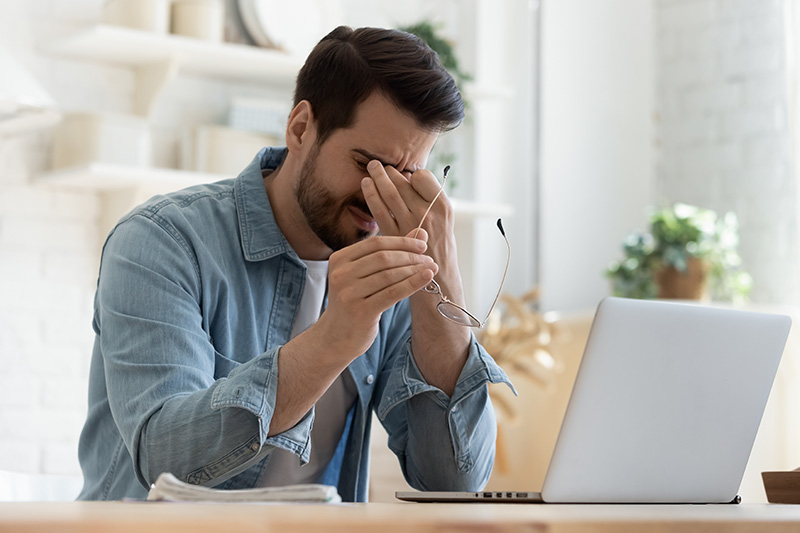Eye pain and Eyestrain
Eyestrain is a common condition that happens when the eyes get tired of intense use, such as staring at computer screens and other digital devices or driving long distances. Eyestrain might be annoying. But it’s generally not serious and goes away as soon as you rest your eyes or take some steps to reduce your eye discomfort. In some cases, the symptoms and signs of the eye can indicate the underlying condition of the eye that needs treatment.
Symptoms
- Tired, sore, burning and itching eyes
- Watery eyes or dry eyes
- Blurred or double vision
- Headaches
- Sore neck, shoulder or back
- Sensitivity to light
- Difficulty to concentrate
- Feeling that you can’t keep your eyes open
Causes
Common causes of eye strain include:
- Spending too much time on digital devices
- Reading without pause to rest your eyes
- Driving long distances and other activities involving extended focus
- Being exposed to bright light
- Straining eyes to see in very dim light
- An underlying eye problem, such as or improper vision (refractive error) or dry eyes
- Being stressed or tired
- Being exposed to dry moving air from an air-conditioning system, a fan or a heater
Treatment
Usually, eye-train treatment is about changing your daily habits or environment. Some people may need treatment for underlying eye conditions. For some people, wearing glasses prescribed for specific activities, such as computer use or reading, helps to reduce eye strain. Your doctor may suggest you take regular eye breaks to help your eyes focus at different distances.
Lifestyle and other remedies
Consider these tips to reduce or prevent eye-straining.
- Adjust the lighting.
- While watching TV, keep the lights softly lit as it is easier on the eyes.
- When reading printed materials or working closely, try positioning the light source behind you and direct the light to your page or task. While reading at a desk, use a lampshade placed in front of you. The shade will help to prevent the light from shining directly into your eyes.
- Take some breaks. When you’re doing close work, take occasional breaks and rest your eyes by looking away from the digital screen.
- Limit the time of the screen. It is essential for children who may not have a connection between extended viewing, eye strain and the requirement to rest their eyes regularly.
- Use some artificial tears. Over-the-counter artificial tears can help prevent and ease dry eyes. Put them in your eyes even when they feel fine to keep them well lubricated and prevent a recurrence of symptoms. The doctor may suggest which eye drops might be best for you.
- Improve the quality of your space in the air. Specific changes that may help prevent dry eyes include the use of a moisturizer, adjusting the thermostat to reduce blowing air, and avoid smoking. Moving your chair to another area may help reduce the amount of dry moving air on your eyes and face.
- Choose the right eyewear. If you wear glasses or contacts and work on a computer, consider investing in glasses or contact lenses specifically designed for computer use. Ask the optometrist about lens coatings and tints that might help.





